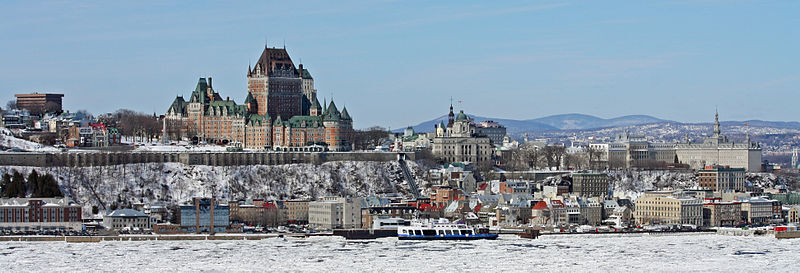The concepts covered in this sheet go beyond those seen in secondary school. It is intended as a supplement for those who are curious to find out more.
Cities began to appear with the advent of the first human civilisations: Mesopotamia, Egypt, India, China and so on. These first cities depended on agriculture and livestock farming to meet the needs of their inhabitants.
The concentration of commercial activities became possible as soon as transport networks and communication routes were put in place. Merchants and artisans used these routes to sell their wares. The economic activity of the towns was born while the first administrative institutions were created to manage this new type of space, which was very different from rural areas. The same pattern of urban development occurred a little later in other civilisations: Greeks, Romans, Arabs, etc.
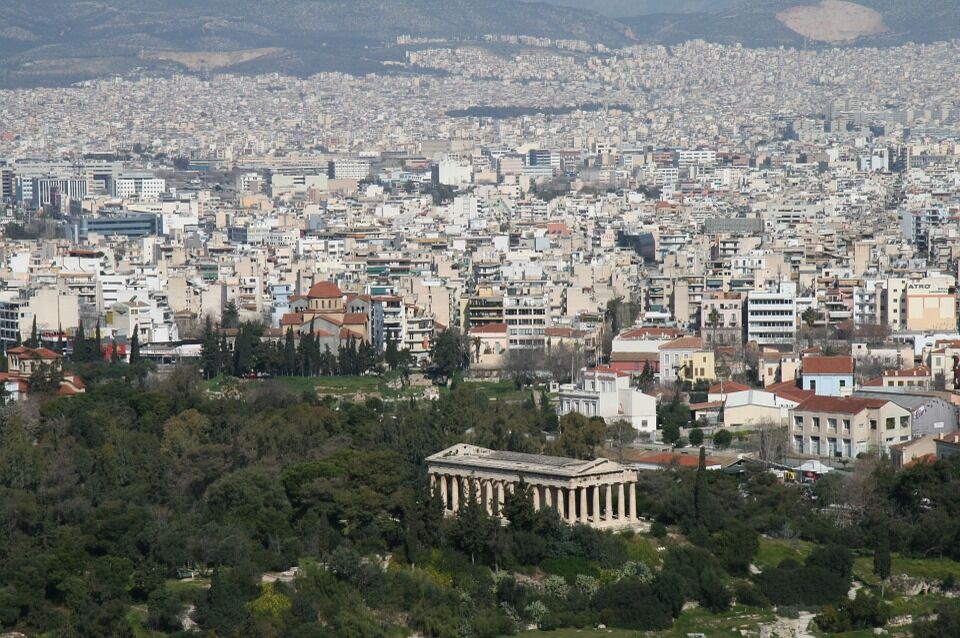
Ancient monuments in Athens
After a decline in the early Middle Ages, towns began to flourish again from the 11th century onwards. Once again, the urban development of the period was due to commercial activities and the exchange of goods between the various regions of Europe, Africa, the Middle East and Asia.
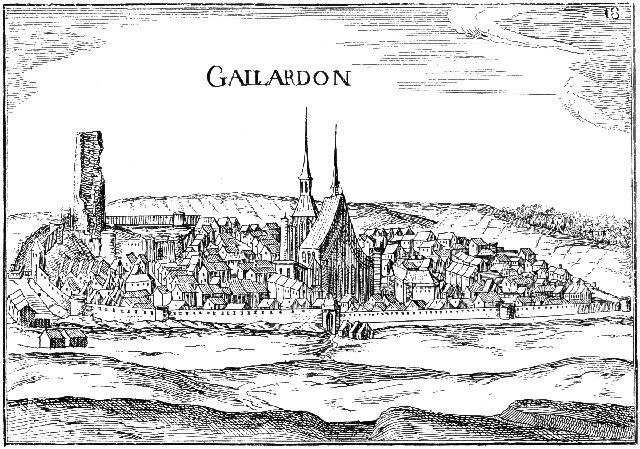
Engraving of a town in the Middle Ages
At that time, cities such as Constantinople, Baghdad and Timbuktu played an important commercial and intellectual role. Markets and schools were two of the major activities of the largest cities in the 13th century.
There were very few major changes to towns between the Middle Ages and the end of the 18th century . However, from the very start of the Industrial Revolution, cities underwent unprecedented development. Despite the difficult conditions that awaited the new city dwellers, the city held great appeal for the population. Peasants left the countryside to find work in factories and plants, creating a huge wave of urbanization. At the time, urbanization was directly linked to technical innovations: steam machines, assembly lines, railways, etc. At the beginning of the 20th century, 10% of the world's population lived in cities.
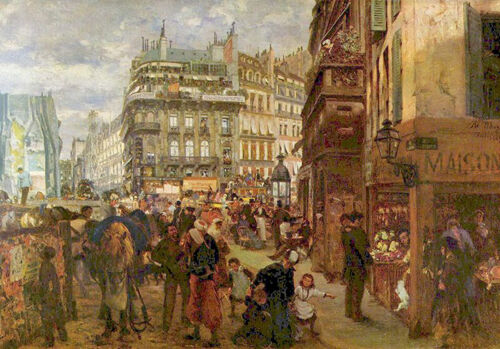
Paris in the industrial age
From the end of the war, and especially from the 1950s onwards, every city in the world once again underwent a period of urbanization that surpassed anything seen before. This time, however, the urbanization movement was global in scope and took place even, and above all, in developing countries. This strong urban growth was mainly due to the development of international economic exchanges and decolonization. Urban agglomerations developed very rapidly, especially in Asia, Africa and Latin America.
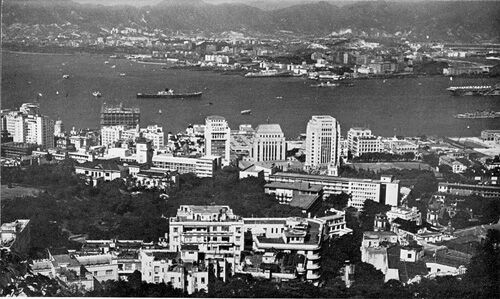
Hong Kong, 1960
At the start of this period, in 1950, 30% of the world's population lived in cities, and there were 46 major cities in the world. By 1995, this proportion had risen to around 45%. At the beginning of the 21st century, the number of people living in cities was greater than the number living in rural areas, for the first time in history. At that time, there were 187 major cities in the world. The new cities were located in developing countries.
According to estimates, this trend is set to continue, and the proportion of people living in cities is set to increase still further. Hence the importance of thinking about how cities are organised and how to solve the problems associated with them. Today, urban growth is encouraged by demographic growth, rural exodus, economic expansion and migratory flows. It is not desirable for cities to grow too fast, as this would result in inadequate infrastructure, labour market supply and housing availability.
The city is the most complex form of social organisation. Although widespread as a living environment, the city is nevertheless a structure that requires constant planning, the importance of which is sometimes forgotten. To function properly, a city must be more than just a collection of thousands of people living in the same place. If all these people are to live together in harmony in a suitable environment, the city must be equipped with a number of institutions, structures and services that will make life easier for city dwellers, not forgetting that the city must also offer employment opportunities to keep all its citizens busy and supported.
Today, defining what a town is is a much more complex task than it was in the Middle Ages. Indeed, medieval towns were characterised by the presence of several dwellings around a central square (castle or place of worship), with a market and fortifications.
Today, all villages have more or less the same structure as towns. It is therefore somewhat difficult to pinpoint exactly what defines a town. Especially as the criteria vary from one country or region to another: surface area, number of inhabitants, population density, buildings, economy, etc.
One thing is certain: the city absolutely must have certain structures in place: a road network, buildings built to standards (residential, commercial and industrial), food markets, shops, educational establishments, health facilities, etc. To develop properly, a town is built slowly over several years of evolution and expansion.
Cities generally offer more services than rural areas:
- easier access to new technologies and progress;
- greater availability of culture and artistic productions (museums, theatre, opera, art galleries, newspapers, publishing houses, cinemas, etc.);
- greater economic development;
- more jobs in the tertiary sectors;
- faster adaptation to social change;
- better structure and more support for literacy.
The high population density justifies this greater range of services. As more people benefit from the structures, they cost less (less distance to travel) and serve a greater proportion of the population. In fact, for the same cost, the same service serves more people in the city.
Among the essential elements of towns and cities, the administration must provide: a road network, a rail network, public transport, a water supply, wastewater treatment, electricity and gas supplies, schools, health facilities and a waste management system (including recyclable and compostable materials).
Leaders not only have to think about providing these services, they also have to plan their development, set up and build the necessary structures and buildings, and ensure that the various infrastructures are properly maintained. All the services offered in the city help to attract more and more residents. The main challenge for urban management is to take account of all the facets of life in the city.
The political organisation of cities must be sufficiently complex to ensure that services to the population are properly offered and that they develop in parallel with the growth of the city.
In Quebec, cities are administered by an elected mayor. The mayor is assisted by various groups of councillors responsible for managing a part of the city or a particular area. This administration forms the municipal government, which ensures that the city's resources are properly managed. To raise its budget, a commune levies taxes, which it then invests in streets, public transport, parks, museums, libraries, swimming pools and so on. All the bodies that make municipal decisions work at city hall.
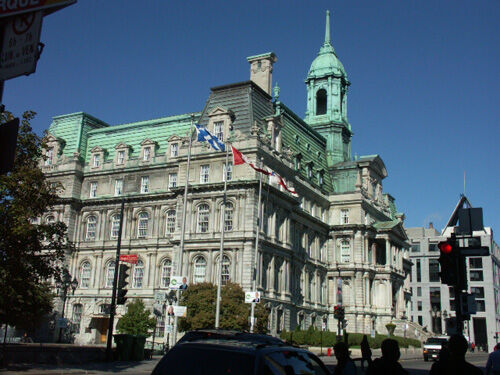
Montreal City Hall
In addition, towns and cities often draw up an urban development plan to specify the way in which neighbourhoods will be developed (streets, police stations, fire stations, hospitals, schools, parks, commercial, industrial and residential zoning). Urban plans also include the development of public transport, waste management, selective collection, wastewater treatment, sewers, electricity distribution networks, etc.
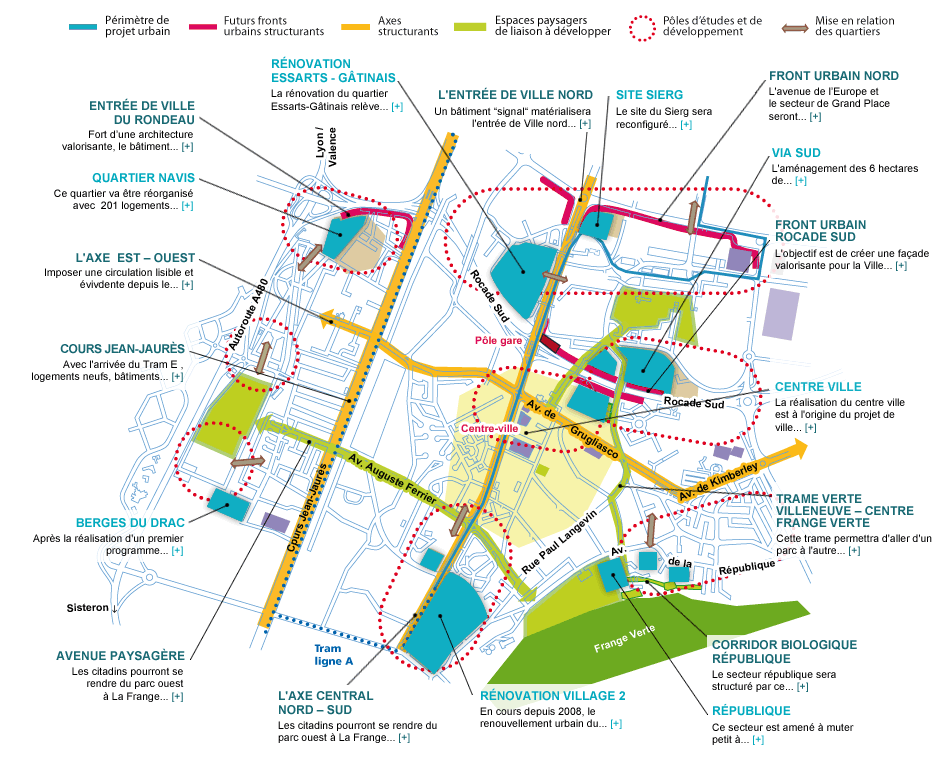
Town planning scheme for the town of Échirolles in France
All this planning serves to make life in the city easier and, above all, to make urban development coherent and structured. Town planners also work to make all services accessible to the entire population within walking distance. In short, if the city is to function harmoniously, there must be:
- good planning of services
- efficient infrastructure that meets real needs (neither too large or too expensive, nor too small or insufficient);
- well-organised services that meet needs.
Moreover, for everything to work well in the long term, leaders need to think about regularly maintaining their structures and re-evaluating their service offering in line with changes in the city and the needs of the community.
For all services, the authority can also choose between public management or entrusting management to a private company. In some cases, cities also opt for a public-private partnership: the infrastructure belongs to the city and is financed by the municipal budget, but the management of the service is entrusted to a company that must provide the level of service required by the authority or lose its contract.
As well as making life easier for its citizens, urban development must also take economic growth into account. Even if citizens have access to all services, they must also be able to find employment. That's why economic growth is so important. Cities must therefore attract the things that generate wealth: industries, shops, head offices, administrative offices, etc. These elements will contribute to economic prosperity. These elements will contribute to economic prosperity, attract more citizens and help finance the city.
Over the last few years, environmental concerns have led to the emergence of trends aimed at developing new structures that are more environmentally friendly and consume less energy. Many of these initiatives involve reducing the space allocated to cars and increasing that allocated to pedestrians, cyclists and public transport.
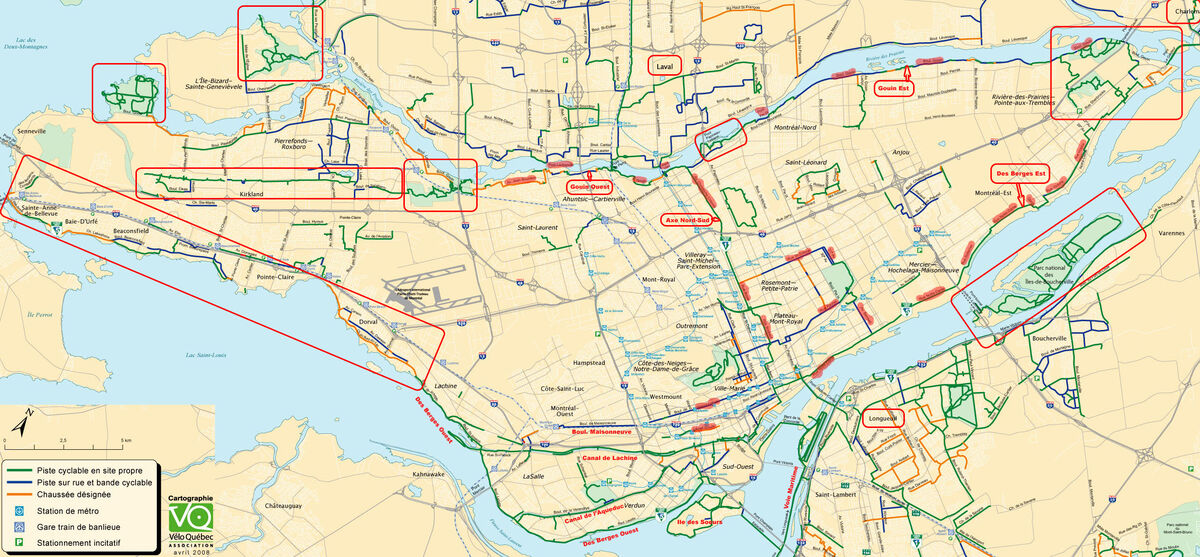
The City of Montreal's network of cycle paths
In terms of public transport, a number of initiatives have been taken to vary the modes of transport available: tramway renewal, metro, reserved lanes for buses and carpooling, car-sharing, and so on. An example of how the car has been reduced: the former main boulevard was modified to create a tramway lane and a lane reserved for buses, and the central part of the street (in Bordeaux) was pedestrianised:
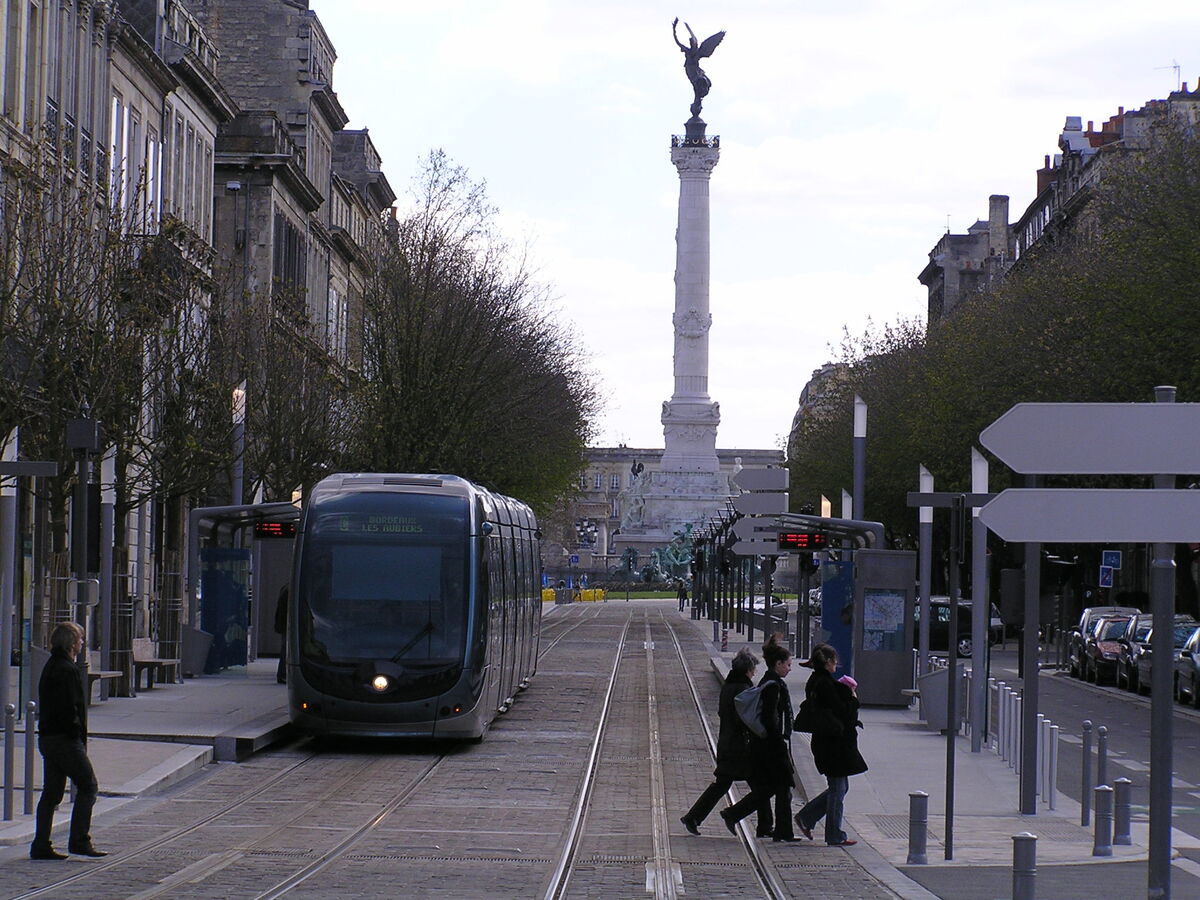
The tramway in Bordeaux
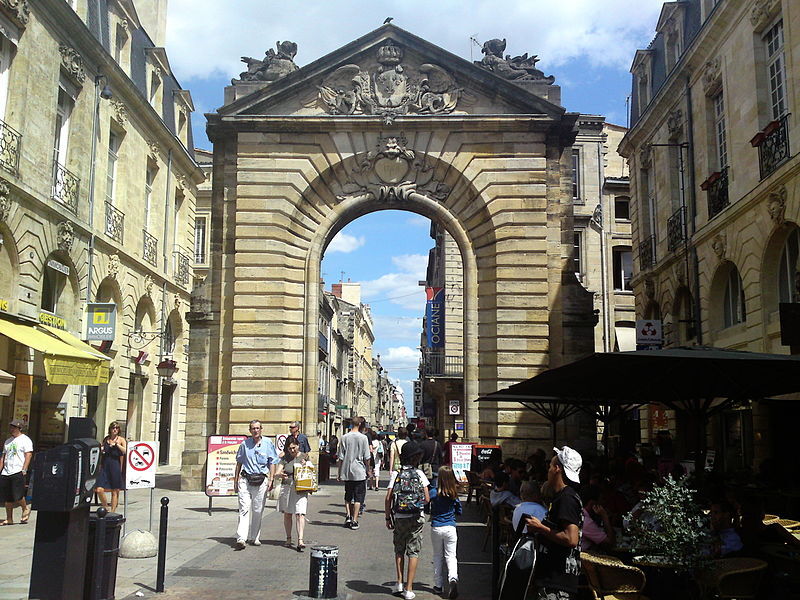
A pedestrianised street in Bordeaux
Greener technologies also aim to put in place energy-efficient structures such as solar energy panels, as well as elements to increase the amount of vegetation in the city: parks, car-free spaces, green roofs, etc. New town planning schemes will have to take these realities into account.
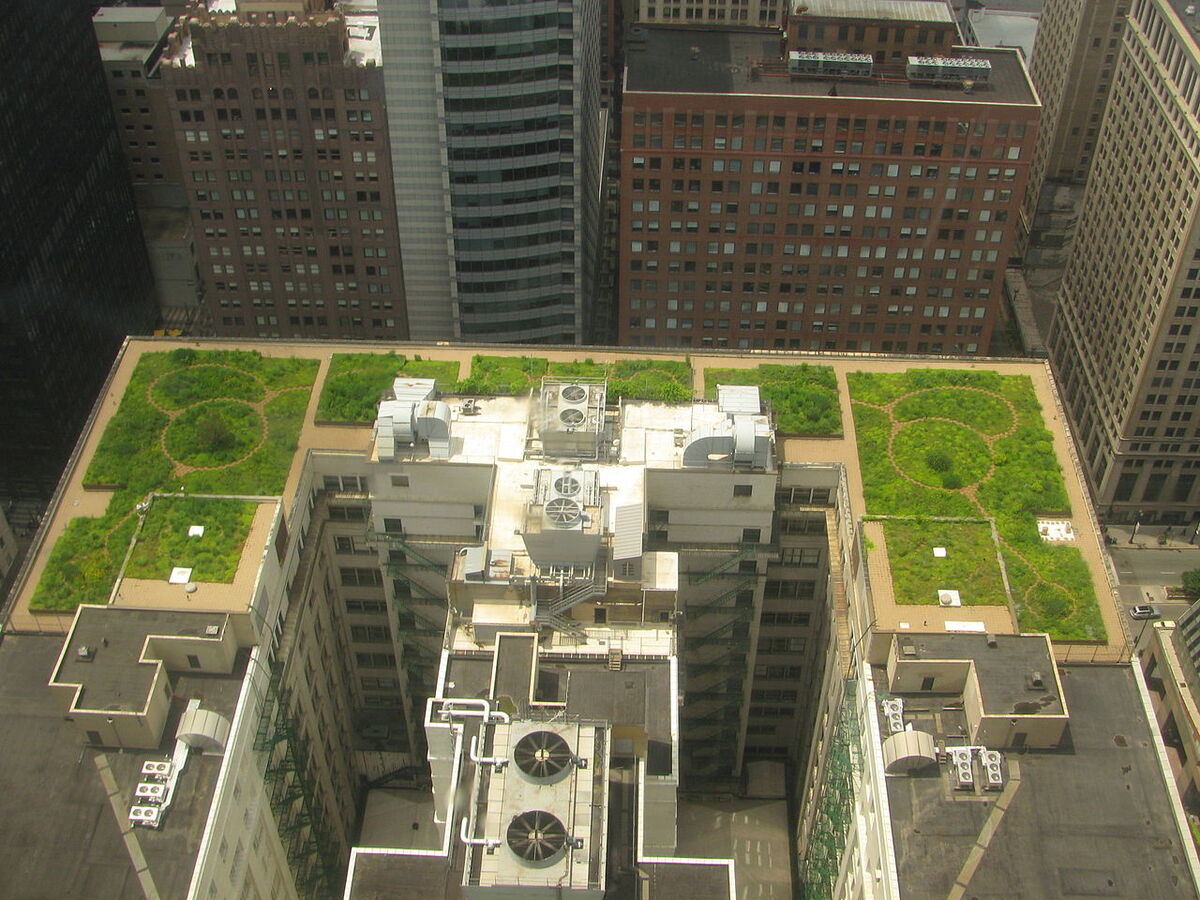
A green roof that helps to cool and purify the air in the city (Chicago, United States)
In Quebec, moreover, an organisation is dedicated to measures linked to the sustainable development of cities and the countryside. Vivre en ville draws on experiences from around the world to suggest ways in which cities can be made more pleasant and less polluted.
In some cities, especially those in developing countries, infrastructure and services can be inadequate. Meeting the basic needs of citizens is therefore a problem. Problems with water supply and waste management can affect public health and encourage the spread of serious infections and diseases. Some cities, such as Mexico City and Sydney, have great difficulty finding sufficient sources of drinking water, while others, such as Manila, have greater difficulty managing waste water and waste.
The bigger and more prosperous cities are, the more waste will be produced and the less easily the reflex to reuse and recycle will develop. That's why today's cities need to find better ways of managing waste collection, reducing the production of rubbish at source and, above all, sorting waste properly.

Different bins for sorting waste
The place to which the waste is sent is also an important choice. If it is too close to residents or overcrowded, the health risks to residents are higher. On the other hand, the further away the landfill, the more expensive it will be to transport the waste. Developing countries are also faced with a shortage of housing and reception facilities. As a result, many citizens are crammed into shantytowns and slums, where sanitary conditions pose major health risks.
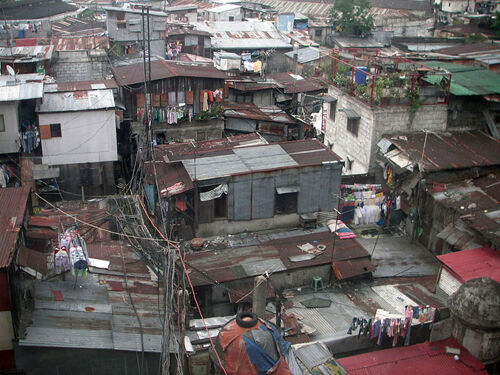
A slum, Manila
In rich countries, the issues are different, but just as important. A number of major cities in the West are also experiencing enormous difficulties in obtaining their water supplies. New York is a case in point. Several mother countries, including Tokyo and Beijing, also have to deal with serious pollution problems.
The development of means of public transport, such as suburban trains and express buses, has also contributed to urban sprawl. Less densely populated suburbs make the services offered less cost-effective and take people further from their place of work. Other issues facing cities include housing shortages, drug problems, violence, unemployment, air quality, over-consumption and transport.
All the problems faced by towns and cities will have to be properly managed, as there is no indication that people will leave towns and cities en masse. All cities need to find appropriate solutions to improve living conditions for their citizens.
With this in mind, a number of cities are setting up groups of residents to help improve their neighbourhoods. Because they live in these neighbourhoods every day, the people who form these groups are in the best position to understand the needs of their area and will themselves benefit from these changes.
From the time it was founded in 1608, Quebec City was primarily dedicated to the fur trade. During its early years, the population growth rate was consequently very low. In 1627, there were just 72 inhabitants in Quebec City. The measures taken by Louis XIV helped to improve the situation: appointment of an intendant, dispatch of colonists, and so on. By 1663, Quebec's population had risen to 2,000, before rising to 4,500 in 1670. At the time of the Conquest, the city was home to 7,000 inhabitants.
From the start of the British regime, Quebec took on a new commercial vocation. Shipbuilding and port activities were on the rise. These new activities attracted even more city dwellers, boosting the population from 10,000 in 1800 to 60,000 in 1861.
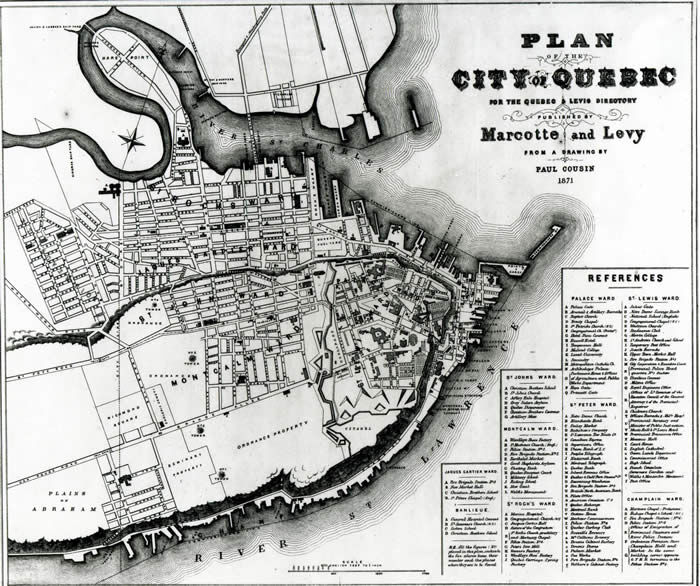
Map of Quebec City in 1871
The rapid increase in the number of inhabitants in Quebec City obliged the leaders to set up numerous services, such as better aqueducts, sewers, the extension of certain streets and the creation of new arteries, the construction of staircases and pavements, the introduction of a night-time street lighting system, and the creation of police and fire services.
At the start of the Industrial Revolution, a number of shoe and clothing factories set up shop in Quebec City. At the time, the goods produced were intended solely for the local market. The construction of the railway serving the north shore in 1879 and the modernisation of the port meant that by the end of the 19th century, Quebec City was attracting more and more industries.
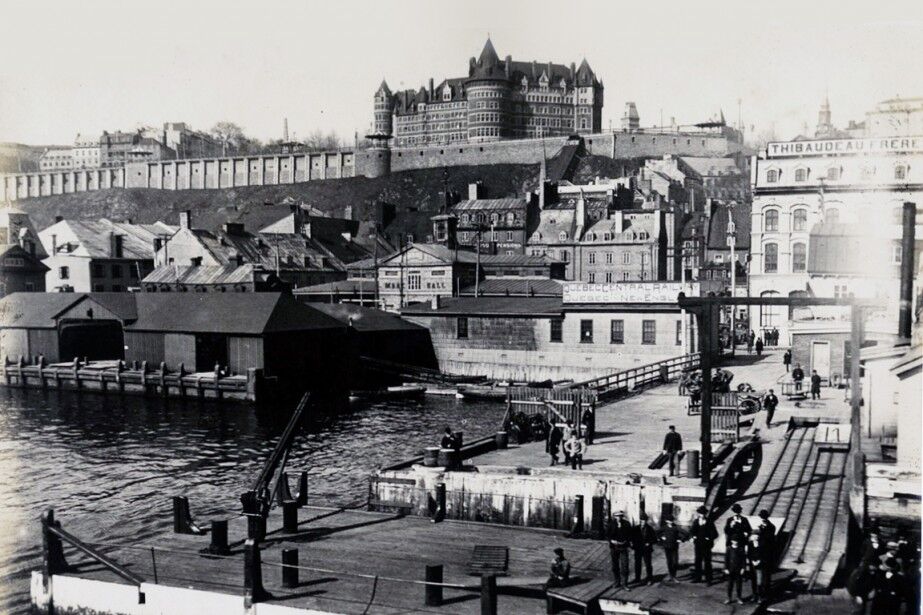
The port of Québec in the 19th century
This increase in the number of industries had a major impact on demography, as the number of city dwellers continued to rise. In 1901, 69,000 people lived in Quebec City. Several new neighbourhoods were springing up on the outskirts, while the old quarters were even more densely populated. By 1931, Quebec City's population had reached 130,600.
This period also saw a significant increase in the number of French-speaking residents, as the city regained its status as the provincial capital. Little by little, Quebec City became a major cultural and tourist centre, as well as an equally important religious centre. All the region's services and businesses were concentrated in the capital.
It was during this period that the city established new institutions such as City Hall, the Château Frontenac, the Price Building, the Plains of Abraham and Victoria Park.
During the Great Depression of the 1930s, the presence of industries in the town dropped considerably. Fortunately, businesses and services continued to expand. During the Second World War and the years that followed (between 1939 and 1954), 500 commercial businesses set up in Quebec City. At that time, half of the workforce worked in the tertiary sector, while the proportion working in manufacturing made up a quarter of the active population.
